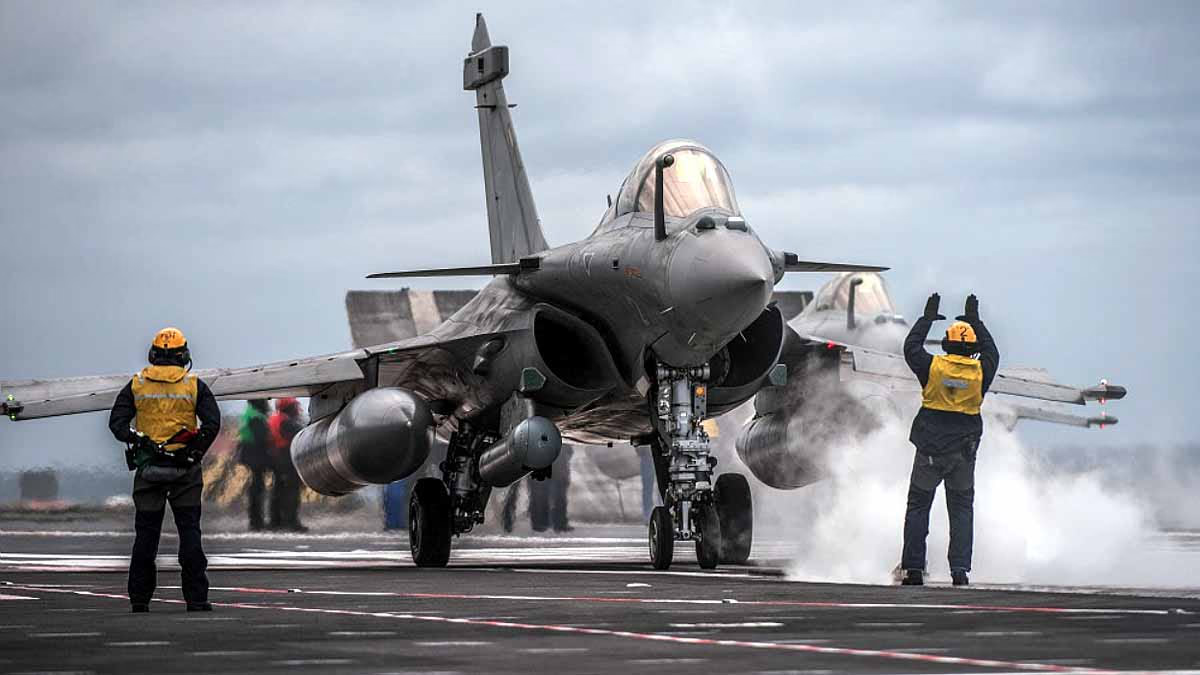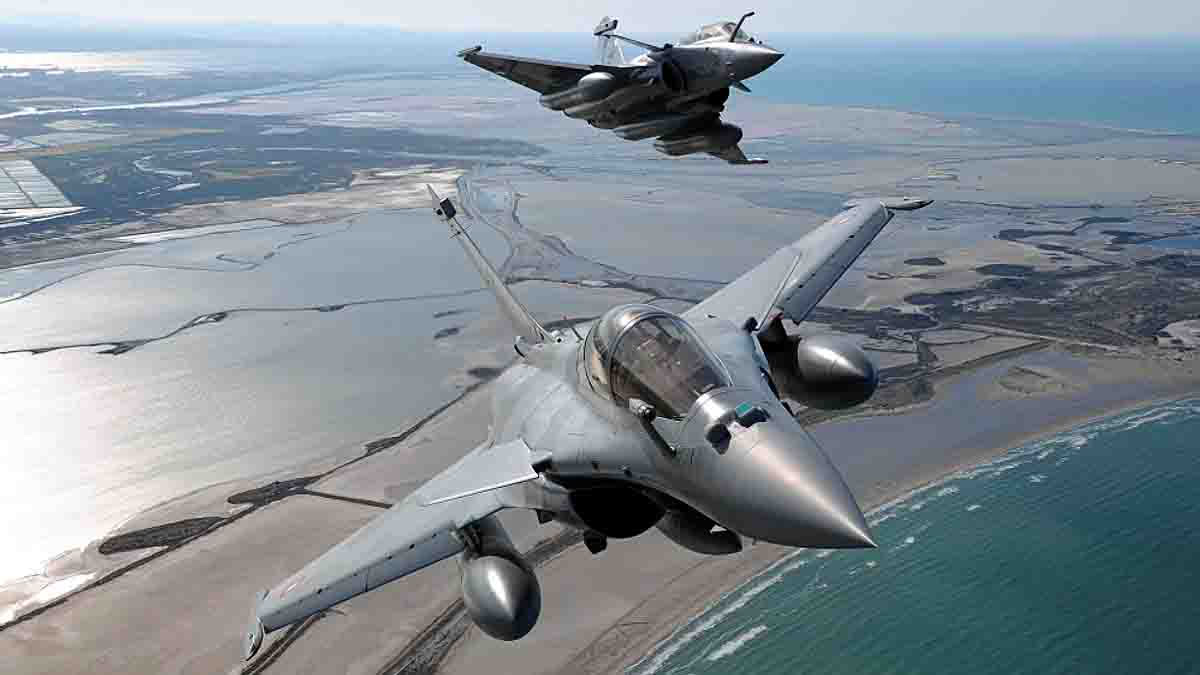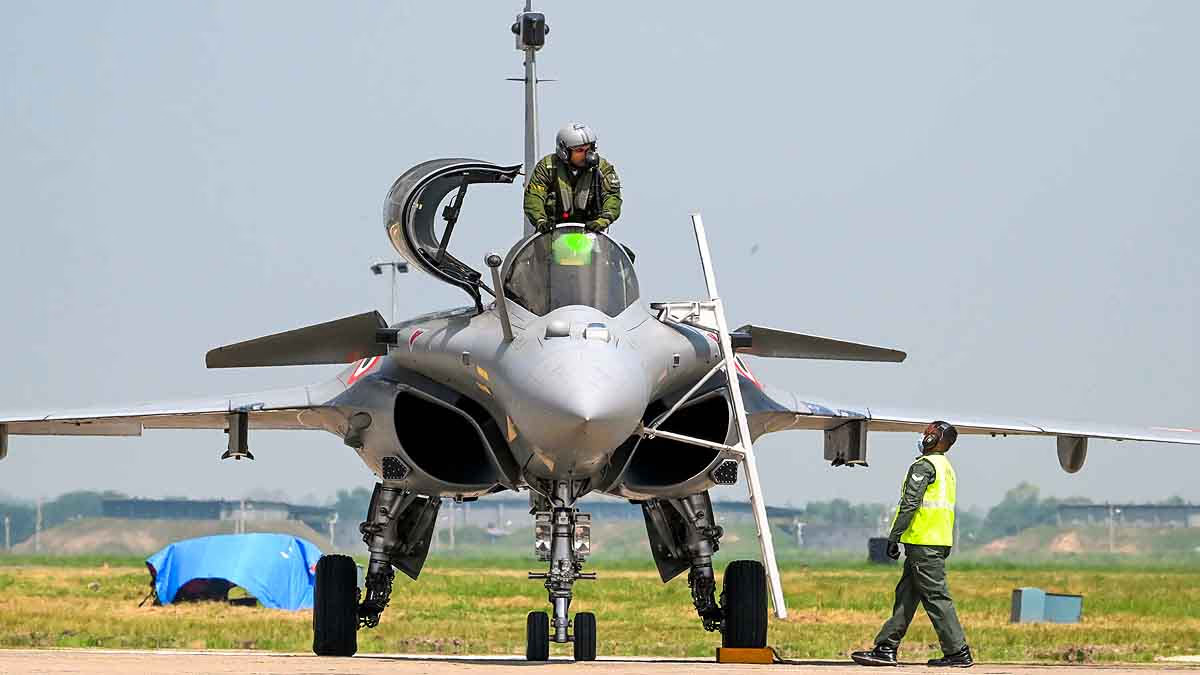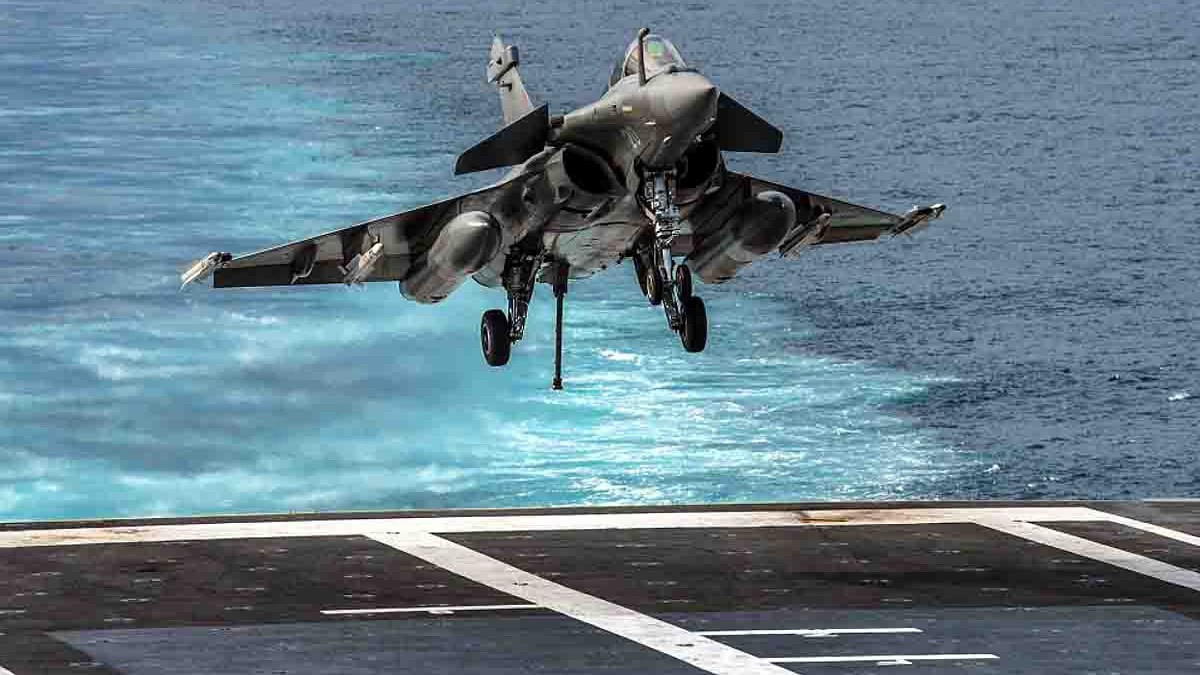The Rafale Marine Fighter Jet (Rafale-M) is emerging as a crucial defense asset for the Indian Navy. Manufactured by France's Dassault Aviation, this multirole fighter jet has already enhanced the Indian Air Force's capabilities and is set to be a game-changer for the Navy. Present at the deal signing were Defense Secretary Rajesh Kumar Singh and Vice Admiral K. Swaminathan.
Recently, India and France finalized a deal for 26 Rafale Marine jets worth ₹63,000 crore, which will boost India's strategic and maritime security. This article delves into why the Rafale Marine Fighter Jet is vital for India and how it will fortify the Indian Navy's strategy.
This deal includes 26 Rafale Marine jets (22 single-seaters and 4 twin-seat trainers) to enhance India's maritime strike and air defense capabilities.
The total price is ₹63,000 crore. Deployment is planned on aircraft carriers INS Vikrant and INS Vikramaditya. Delivery is expected to commence by 2029 with full deliveries by 2031.

Source: aajtak
Significance of the Rafale Marine Fighter Jet
1. Maritime Security and Regional Dominance
India's geographic location positions it as a major power in the Indian Ocean Region, a strategic and crucial global trade route. With increased Chinese naval presence, securing maritime boundaries has become more crucial for India. Rafale Marine jets, designed for aircraft carriers like INS Vikrant and INS Vikramaditya, will empower the Indian Navy in establishing dominance in the region.
These jets are not only capable of maritime surveillance and air strikes but can also conduct anti-ship warfare and nuclear deterrent missions, playing a key role in maintaining peace and stability in the Indo-Pacific region.
2. Replacing the Old MiG-29K Fleet
The Indian Navy currently uses MiG-29K fighter jets on its aircraft carriers. Rafale Marine jets are set to completely replace these older jets. With state-of-the-art technology and superior performance, Rafale-M is an ideal choice for the Navy, enhancing operational capabilities while reducing maintenance and logistics costs, leveraging existing infrastructure already in use by the IAF.

Source: aajtak
3. Responding to Strategic Challenges
Faced with strategic challenges from neighboring countries, particularly China and Pakistan, the deployment of Rafale Marine jets will equip India to respond effectively. Armed with precision-guided munitions like Meteor, SCALP, and Exocet, these jets can precisely target air, sea, and ground threats, offering the Indian Navy a formidable 'invisible armor' to tackle regional threats.
4. Enhancing Aircraft Carrier Capabilities
With two operational aircraft carriers—INS Vikrant and INS Vikramaditya—the Indian Navy is bolstered by Rafale Marine jets specially designed for carrier deployment. Featuring robust landing gear, folding wings, and short takeoff/landing capabilities, these additions enable extended air strike and surveillance capabilities at sea.
5. Strengthening Indo-French Defense Cooperation
The Rafale Marine jets acquisition symbolizes a deep Indo-French defense partnership. The deal not only signifies a defense purchase but also strengthens strategic ties, including training, maintenance, and logistic support, boosting India's indigenous defense capabilities. France’s proposal to make India the largest operator of Rafale further solidifies India's global defense stature.

Source: aajtak
Key Features of the Rafale Marine Fighter Jet
Renowned for their advanced technology and versatile capabilities, Rafale Marine jets are vital to the Indian Navy for several reasons:
Multirole Capability:
Capable of air-to-air, air-to-ground, and air-to-sea missions, Rafale-M also supports nuclear deterrence.
Advanced Sensors and Radar:
Equipped with RBE2-AA AESA radar and infrared search and track (IRST) sensors, enabling unmatched target tracking and accuracy.
Diverse Weaponry:
Features Meteor (long-range air-to-air missile), SCALP (air-to-ground missile), and Exocet (anti-ship missile).
Carrier Operations Design:
Includes reinforced landing gear, folding wings, and short takeoff/landing, ideal for aircraft carrier operations.
High Payload Capacity:
Capable of carrying substantial weapons and equipment, suitable for long-range missions.
Reliability and Maintenance:
Designed for tough conditions with minimal upkeep; existing infrastructure from IAF’s Rafale operations lowers costs for the Navy.

Source: aajtak
Difference between Rafale Marine and Air Force Rafale
There are key differences between Rafale Marine and Air Force Rafale jets, making them specialized for maritime operations:
Landing Gear and Airframe:
Rafale-M has a strengthened airframe and landing gear for aircraft carrier landings and takeoffs.
Folding Wings:
Designed for limited space, folding wings facilitate storage on carrier decks.
Weight:
Rafale-M is slightly heavier than the Air Force version due to maritime operational modifications.
Mission Profile:
Specialized for naval warfare like anti-ship strikes and maritime surveillance.




